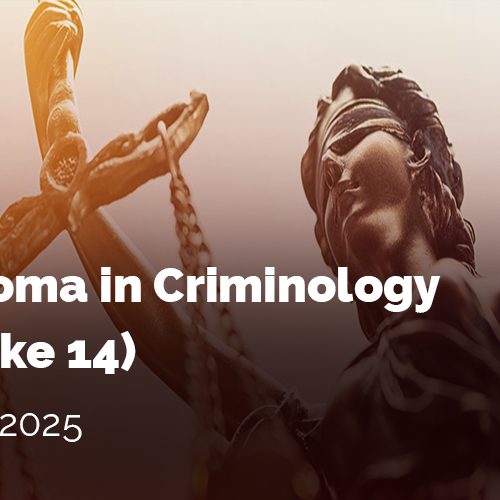Sri Lanka which is also known as “The Granary of the East” was the center that spread the lord buddha’s Sri Saddharma all around the world. It has said that the people of Anuradhapura had trouble drying a mat of grain because there were “Maha Rahath” Monks traveling through the sky blocking sun, so much so that there weren’t enough sunlight reaching earth. Even though it can’t be taken as complete truth, we can extract an important message from that old saying. Mentioning the Tank before the Dagoba (Stupa) show “The Granary” concept, and mentioning the Dagoba shows the” Land of the Dharma” concept. And with this two concepts combined Sri Lanka defined as “The Land of Dharma” and as “The Granary”. The ancient industry of building tanks which begun from Basawakkulama Tank; has never ended its course till the present day. The main role of these tanks is to provide water to the farming activities.
The industry made when the Farmer (Goviya) and Cattle (Gavaya) combined is called “Govithena” (agriculture). Farmer’s wife is called “Geviliya” and the time when they return the cattle from the grass fields is called “Gomman Welawa”. Thus there are plenty of words that had added in to the Sinhala vocabulary because of agriculture. There is a huge meaning that Robert Knox who lived in the Hill Country expressed the situation of the society those days as; “When the farmer washed off mud, He is even fitting for the crown”.
Agriculture industry in Sri Lanka was majorly based on Paddy cultivation. In Sinhala, It’s “Vee Vagawa”. The word “Vee” descended from the Sanskrit word “Veerahee” and in Pali language It’s “Veehi”. In ancient Sri Lanka there had been about 263 different varieties of Rice and these rice species were suiting for different geographical locations and different climatic conditions. There were rice species which can grow in salty and mineral lands in coastal areas, in dry regions such as Anuradhapura, Polonnaruwa and arid regions such as Mannar, Hambanthota. And there were rice species which can grow in the cold and mountainous regions such as Kothmale, Badulla, Walapane, Nuwara Eliya. There also were species which can grow in lands which are in frequent water gathering grounds. And there were species which can grow on the sandy, clay, gravel, granite filled lands (Goda Idam). And also species which could be grown in Coconut lands, in Chena and home gardens. And there were Rice species that had been used for medicinal purposes too.
In the times of Portuguese, Dutch and English rule; our irrigation systems had gone in to the wild and it was resorted by elephants, bears and other wild animals and Forests were grown over our fertile lands. And in those times, farmer had converted in to a laborer and cornered in the society. The huge varieties of rice we possessed were eliminated. The number of varieties we have remaining in the country is still unknown. This large variety of rice species should be taken as valuable possessions in national heritage which were stolen away from the country. There is a possibility that rice research institutes still have these types of rice species but there’s no surprise that there are plenty of them has gone extinct.
Lets identify the 263kinds of rice which ancient Sri Lanka had.
1. Akurabada (අකුරම්බඩ) 2. Angureli (අඟුරැලි) 3. Athathuru (අතතුරු) 4. Asuramboda (අසුරම්බොඩ) 5. Dewaradiri (ඇද්. දෙවරැදිරි) 6. Ada al (ඇද
ඇල්) 7. Adi gam (ඇදි ගම්) 8. Adigam al (ඇදිගම් ඇල්) 9. Ambala al (ඇඹල ඇල්) 10. Ida al (ඉද ඇල්) 11. Indipath al (ඉඳිපත් ඇල්) 12.Ilankaalin
(ඉලංකාලිං, ඉලංකැලි), 13 Ilangamattan (ඉලංගමට්ටන්), 14. Ilanga kottel (ඉලංගු කොට්ටැල්) 15. Udarata Maa (උඩරට මා), 16. Uuru
(ඌරු), 17. Uuru al (ඌරු ඇල්), 18. Kachchipota (කච්චිපොට), 19. Kara al (කරඇල්- කරයෑල්), 20. Kawudu al (කවුඩු ඇල්), 21. Kaha al
(කහ ඇල්), 22. Kahata (කහට) 23. Kahata al (කහට ඇල්), 24. Kahata kunda (කහට කුණ්ඩ) 25. Kahatamba (කහටම්බා), 26. Kahatamaa (කහටමා),
27. Kahata handiran (කහට හන්දිරන්), 28. Kahapath ali (කහපොත් ඇලි), 29. Kahamaa (කහමා), 30. Kalu (කළු), 31. Kalu al (කළු ඇල්), 32. Kalu kunda
(කළුකුණ්ඩ), 33. Kalu kundan (කළු කුන්දන්) 34. Kalu kumara (කළු කුමාර), 35. Kalu kuru (කළු කුරු), 36. Kalu kothwila (කළු
කොත්විල), 37. Kalu kos eta (කළු කොස් ඇට), 38. Kaludaana hala (කළුදාන හල), 39. Kaluduru ( කළුදුරු), 40. Kalu pannati (කළුපන්නටි),
41. Kalu bora al (කළු බොර ඇල්), 42. Kalu maa (කළුමා), 43. Kalumaanikkan (කළුමානික්කන්), 44. Kalu murunga ( කළු මුරුංගා), 45. Kalu viralu al (කළු වීරළු ඇල්), 46. Kalu handiram (කළු හන්දිරම්), 47. Kalu hiinati (කළු හීනටි), 48. Kami hal (කැමි හැල්), 49. Kithul kota al (කිතුල් කොට ඇල්), 50. Kithul path (කිතුල් පත්), 51. Kithul path al (කිතුල් පත් ඇල්), 52. Kiri al (කිරි ඇල්), 53. Kiri kunda
(කිරි කුණ්ඩ), 54. Kiri kumba (කිරි කුම්බ), 55. Kiri kumba al (කිරි කුම්බ ඇල්), 56. Kiri naaran (කිරි නාරන්), 57. Kiri bara al (කිරි බැර ඇල්), 58. Kuda karalina (කුඩා කරලිනා), 59. Kudu al (කුදු ඇල්), 60. Kuru (කුරු), 61. Kurumaa (කුරුමා), 62. Kurumpath al
(කුරුම්පත් ඇල්), 63. Kurulu al (කුරුළු ඇල්), 64. Kurulu al (කුරුළු ඇල්), 65. Kurulu thudu (කුරුළු තුඩු, කුරුළු
පිහාටු), 66. Kotti yaran (කොට්ටි යාරන්), 67. Koth al (කොත් ඇල්), 68. Koththa malmi (කොත්ත මල්මි), 69. Komadu al කොමදු
ඇල්, 70. Kolo (කොලො), 71. Kohu (කොහු), 72. Kohumaa (කොහුමා), 73 . Kohu dewaraddiri (කොහු දෙවැරැද්දිරි), 74. Kohu horanavaala (කොහු
හොරණවාල), 75. Ganathudu al (ගනතුඩු ඇල්), 76.Gana thudapath al (ගන තුඩපත් ඇල්), 77. Gamboda hiinati (ගම්බොඩ හීනටි), 78. Galpaa (ගල්පා), 79. Galbada al (ගල්බඩ ඇල්), 80. Galbada Hali ගල්බඩ හැළි, 81. Gal horanaawala (ගල් හොරණවාල), 82. Ginimaa (ගිනිමා), 83. Ginirathna (ගිනිරත්න), 84. Giraathudu al (ගිරාතුඩු ඇල්), 85. Giri kurumba (ගිරි කුරුම්බ), 86. Giris (ගිරිස් – ගිරේසස්),
87. Gurul al (ගුරුල් ඇල්), 88. Goda maa (ගොඩමා), 89. Goda horanaawala (ගොඩ හොරණවාල), 90. Thatu al (තටු ඇල්), 91. Thatu path al (තටුපත්
ඇල්), 92. Thana al (තණ ඇල්), 93. Thamalingam al (තමලිංගම් ඇල්), 94. Thalamal al (තලමල් ඇල්), 95. Thawaalu (තවාලු, කැල්) 96.Nisalaa hali
(නිසලා හැළි), 97. Thulunga (තුලුංග), 98. Thulunu al (තුලුනු ඇල්), 99. Thal (තැල්), 100. Dik (දික්), 101. Dena (දෙන), 102. Delpath al (දෙල්පත් ඇල්), 103. Dewaraddiri (දෙවරැද්දිරි), 104. Dehilinpath al (දෙහිලින්පත් ඇල්), 105. Dewa al (දේව ඇල්), 106. Dewaraaja al (දේවරාජ ඇල්), 107. Doluwa al (දොලුව ඇල්), 108. Dola al (දොa ඇල්), 109. Dola batuwa al (දොa බටුවා
ඇල්), 110. Nalaa al (නළා ඇල්), 111. Nalaa hali (නළා හැළි), 112. Nalaamal al (නළාමල් ඇල්), 113. naaran ali (නාරන් ඇලි),
114. Nahu nati (නැහු නැටි), 115. Niwudu rata (නිවුඩු රට), 116. Nugapath al (නුගපත් ඇල්), 117. Path al (පත් ඇල්), 118. Pathu
(පතු), 119. Pannati (පන්නටි), 120. panankaaliyan (පනන්කාලියන්), 121. payathuru (පයතුරු), 122. Palaa al (පලා ඇල්), 123. Paala al (පාල ඇල්), 124. Paala sidari (පාල සිදරි), 125. Pinna al (පින්න ඇල්), 126. Wini al (විනිඇල්) puwakmal al ( පුවක් මල් ඇල)
Puspa samba (පුස්ප සම්බා), 127. Pihatu (පිහාටු), 128. Puluk hamban (පුළුක් හම්බන්), 129. puwaalu (පුවාලු), 130.
pelal (පෙලැල්), 131. Poth al (පොත් ඇල්), 132. podi (පොඩි), 133. Podi kumaara (පොඩි කුමාර), 134. Podi kuru (පොඩි කුරු)
Vipas al (විපස් ඇල්), 135. Podi rata (පොඩි රට), 136. Podi hiinati (පොඩි හීනටි), 137. Podi haathali (පොඩි හාතලි), 138. Pol al (පොල්
ඇල්), 139. Pola (පොල), 140. Poson al (පොසොන් ඇල්), 141. Batu al (බටු ඇල්), 142. Batu kiriyal (බටු කිරියල්), 143. Baru al
බරු ඇල්, 144. Baru kottal (බරු කොට්ටැල්), 145. Baalamaa (බාලමා), 146. Baalamiipath al (බාලමීපත් ඇල්), 147. Baalarath kunda (බාලරත්
කුණ්ඩ, 148. Balalvaana (බළල්වාන), 149. Mada al (මඩ ඇල්), 150. Mada kiri al (මඩ කිරිඇල්), 151. Madathavaalu (මඩතවාලු), 152.
Mada heenati (මඩ හීනටි), 153. Mala mariyan (මල මරියන්), 154. Mala vaariya (මල වාරිය), 155. Maha karalinaa (මහ කරලිනා), 156. Maha kalu (මහ කළු),
157. Maha kaludura (මහ කළුදුර), 158. Maha kiriyal (මහ කිරියල්), 159. Mahakuru (මහකුරු), 160. Maha naaran (මහ නාරන්), 161. Maha dewaraddiri (මහ
දෙවරැද්දිරි), 162. Maga maa (මඟ මා), 163. Maha munas (මහ මුනැස්), 164. Maha horanawaala (මහ හොරණවාල), 165. Maa (මා
,මහ), 166. Maa al (මා ඇල්), 167. Maa ali (මා ඇලි), 168. Maadoluwa (මාදොලුවා), 169. Maapath al (මාපත් ඇල්).
Maalavariyan (මාලවාරියන්), 170. Meepath al (මීපත් ඇල්), 171. Meepath hali (මීපත් හැළි), 172. Muththas (මුත්තැස්), 173. Muthukiri al
(මුතුකිරි ඇල්), 174. Muthu samba (මුතු සම්බා), 175. Murunga (මුරුංගා), 176. Murunaa (මුරුණා),
184. Mudu kiri al (මුදු කිරිඇල්- මුදු කිරියල්), 185. Muukala al (මූකළ ඇල්), 186. Monara al (මොනර ඇල්), 187. Monaraken al
(මොනරකැන් ඇල්), 188. Mopath al (මෝපත් ඇල්), 189. Rata (රට), 190. Rata dewaraddiri (රට දෙවැරැද්දිරි), 191. Rata handiran (රට
හන්දිරන්), 192. Rath al (රත් ඇල්), 193. Rathkara al (රත්කර ඇල්), 194. Karawaakara (කරවාකර), 196. Rath karawaa (රත් කරවා),
197. Rath kundaa (රත් කුණ්ඩා), 198. Rath kunda maa (රත් කුණ්ඩමා), 199. Raththatu al (රත්තටු ඇල්), 200. Rath kumba (රත් කුම්බ),
201. Rathna daanamaa (රත්න දානමා), 202. Rathpath al (රත්පත් ඇල්), 203. Rathpath ali (රත්පන් ඇලි), 204. Rathhandiram (රත්හන්දිරම්),
205. Rathum (රතුම්), 206. Rathu maanikkan (රතු මානික්කන්), 207. Rathu vipath al (රතු වීපත් ඇල්, රතුහාතල්) 208. Radaa al (රදා
ඇල්), 209. raaja (රාජ). 210. Raayana (රායණ), 211. Ruwan al (රුවන් ඇල්), 212. Lena al (ලේන ඇල්), 213. Vaga al (වඟු ඇල්),
214. Vatuwaa al (වටුවා ඇල්), 215. We kola (වේ කොළ), 216. Sankunda al (සන්කුණ්ඩ ඇල්), 217. Saman al (සමන් ඇල්), 218.
Saani al (සානි ඇල්), 219. Sihin ali (සිහින් ඇලි), 220. Sudu al (සුදු ඇල්), 221. Sudu kiri al (සුදුකිරි ඇල්), 222. Sudu kumaara (සුදු
කුමාර), 223. Sudu kottiyaaram (සුදුකොට්ටියාරම්), 224. Sudu kothvil (සුදුකොත්විල්), 225. Sudu kos ata (සුදු කොස් ඇට),
226, Sudu daana haal (සුදු දාන හාල්), 227. Sudu duru (සුදු දුරු), 228. Sudu podi al (සුදු පොඩි ඇල්), 229. Sudu pannam (සුදු
පන්නම්), 230. Sudu mada al (සුදු මඩ ඇල්), 231. Sudu mala mariyan (සුදු මල මරියන්), 232. Sudu maa (සුදුමා), 233. Sudu meepath al (සුදු
මී පත් ඇල්), 234. Sudu maanikkan (සුදු මානික්කන්), 235. Sudu muththan (සුදු මුත්තැන්), 236. Sudu murunga (සුදු
මුරුංගා), 237. Sudu handiram (සුදු හන්දිරම්), 238. Sudu haathali (සුදු හාතලි), 239. Sudu hal (සුදු හැල්), 240.
Sudu heenati (සුදු හීනටි), 241. Sulayi (සුලයි).
Original article in Sinhala
http://www.divaina.com/2010/07/04/siya08.html










